#king Canute of England Norway and Denmark
Explore tagged Tumblr posts
Text
me...





EMMA OF NORMANDY & KING CANUTE Vikings: Valhalla 3.08
#vikings valhalla#vikings valhalla spoilers#3x08#destinies#canute x emma#emma x canute#king canute of england norway and denmark#emma queen of england#emma of normandy#vkcanute#vkemma#gosh the heartbreak#it's unbearable#i know i might seem childish#but they even surpassed rolloxgisla#they were everything for one another#and now emma has to bear the outcomes of his death alone#gosh wish he hadn't had to die#i neeeded more and more of them
346 notes
·
View notes
Photo
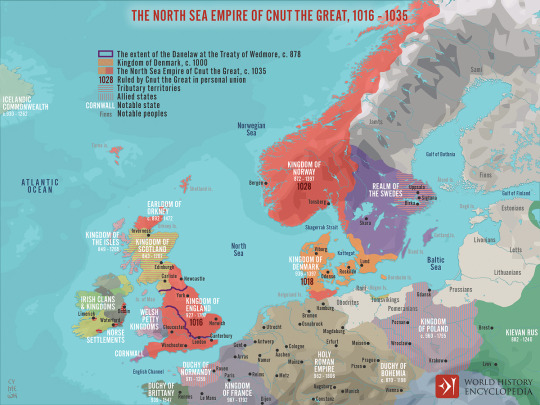
The North Sea Empire of Cnut the Great, 1016 - 1035
A map illustrating the rise and extent of the North Sea Empire under the rule of Cnut the Great (aka Canute, Cnut Cyning, or Knútr Inn Ríki) as a personal union of England, Denmark, and Norway between 1016 and 1035 CE. One of only two English kings to bear the title of “Great,” Cnut was the son of King Sven, the Dane, Forkbeard, and grandson of Harald Bluetooth. During his short reign, King Cnut ruled England as the center of a North Sea Empire that included most of Scandinavia and Ireland and claimed vassalage from as far away as Scotland and Pomerania. After more than two centuries of Viking raids and Cnut’s early years of aggressive conquest, his rule is considered one of the most stable and prosperous of the early medieval period. After his death at 40 from an unknown illness (both his sons died without leaving heirs in just a few years,) a period of messy political instability disintegrated Cnut’s North Sea Empire and, in 1066, made England a target for another foreign appetite - this time from Normandy across the English Channel.
Image by Simeon Netchev
64 notes
·
View notes
Text
Heresies & Ecumenism
“Let all men know how empty and worthless is the power of kings. For there is none worthy of the name but God, whom heaven, earth and sea obey” — King Canute, Ruler of Denmark, Norway, and England (attributed)
The older I get, the more I dismiss the fervent fanaticism I see in those around me. And while I used to think about religious zeal as the sole purview of Christian sectarianism, I've begun to see it more and more in almost every ideological circle I encounter. One person may be a RINO (Republican In Name Only). Another may pay lip service to some transgender cause, reject another point, and be labeled a traitor to the struggle. There are environmental heresies, and there are Russian Ex-Pats who support Ukraine in their current conflict, but who are deemed to be subversive because of the country they were born in.
And the truth of the matter is... It's all nonsense.
The World will do what it does. The People in the world will do what they do, too. There is a reality that exists beyond the models we create in our heads. There's a landscape that will not change, no matter the stories we tell ourselves.
Heresies are nothing more than you and I arguing over which of the stories we're telling ourselves most closely matches our lived experiences, or the reality we assume undergirds it.
I mentioned in a prior post that I try to be accommodating with whatever group I am with.
In that post I gave a quote from St. Ambrose. Here are some from St. Paul.
Give no offense to Jews or to Greeks or to the church of God… —1 Corinthians 10:32
To those outside the law I became as one outside the law (not being outside the law of God but under the law of Christ) that I might win those outside the law. To the weak I became weak, that I might win the weak. I have become all things to all people, that by all means I might save some. I do it all for the sake of the gospel, that I may share with them in its blessings. — 1 Corinthians 9:21-23
Ecumenism has become the "Antichrist" among a large portion of the Christian community. Adventists fear it because they feel that to embrace it will result in apostasy infiltrating their Church, the very same could be said about the Eastern Orthodox Christian Community.
But the truth of the matter is that we are arguing over models, arguing over the way we think the world works, and none of us have the humility to stop and say…
"I don't know what's real. But I will do my best to live out the life I've been given in the way I think God intended me to live".
"We have spoken freely to you, Corinthians; our heart is wide open. You are not restricted by us, but you are restricted in your own affections. In return (I speak as to children) widen your hearts also. — 2 Corinthians 6:11-13
I loved Eastern Orthodox Christianity once, and the people of the Antiochian community I associated with. I also love the People in my Seventh-Day Adventist community too, the ones I continue to daily struggle with. And for all my criticism of other protestant groups, they're all trying to discern the mind of God in their own way. I honestly feel for their struggles, since I don't think they have really looked at nature - they look at God as a very human Judge - and not as the creator of Heaven and Earth.
They don't see him in every single blade of grass, and that must be difficult for them.
I've often wished I could have a spiritual mentor, a father, in the form of an Antiochian Orthodox Priest. I also understand that pillars of Christianity such as St. Mary of Egypt, or St. Simeon the Stylite didn't have anything like that - formal mentors. So I look to more mundane instruction, as both those Saints did, and many unnamed others who must have had to do so also, and I struggle forward.
I watched the recent Heliocentric video, and see in his assessment the same thing I experienced myself. Namely, Worship isn't about forming the perfect model of reality, your Orthodoxy or your Heterodoxy, or giving TED talks on your newfound wisdom. It's about priorities, and recognizing the reality that God comes first.
It's about knowing your place, and finding peace there.
Lord Jesus Christ, Son of God, Have Mercy upon me, A Sinner.
3 notes
·
View notes
Text
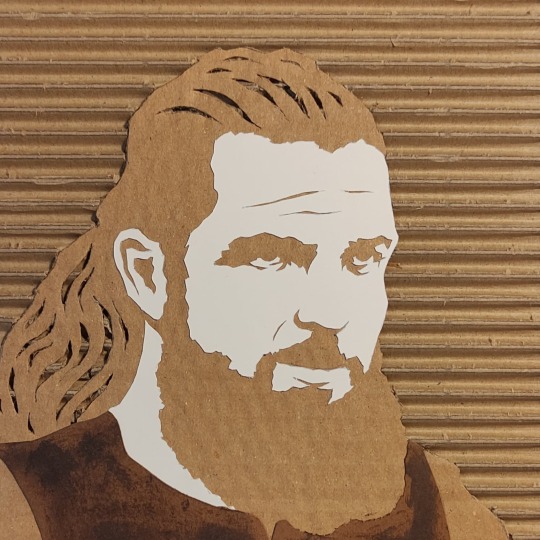
King Canute
King Canute, also known as Cnut the Great, was a medieval king who ruled over a vast empire in northern Europe, including England, Denmark, and Norway. Canute became King of Denmark in 1018 and then conquered England in 1016, becoming the first Viking king of England. He later added Norway to his kingdom, creating a vast empire that was one of the most powerful in Europe at the time. Canute was known for his military prowess, as well as his political and administrative skills. He was a shrewd ruler who was able to maintain stability and peace in his kingdom, despite the challenges of ruling over such a diverse and far-flung empire. Canute was also known for his religious piety. He was a devout Christian who supported the church and made numerous donations to religious institutions throughout his empire. Canute died in 1035 at the age of 40, leaving behind a powerful and influential legacy in northern Europe.
11 notes
·
View notes
Photo
When history repeats itself <3.

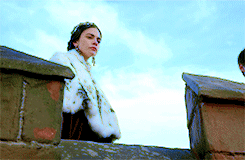

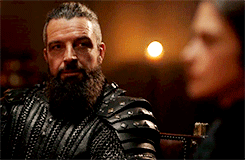
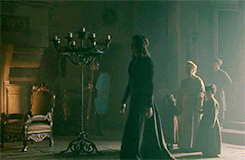
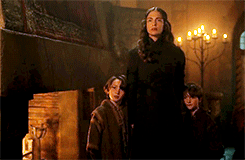
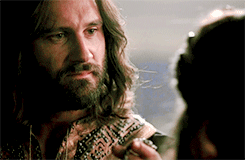
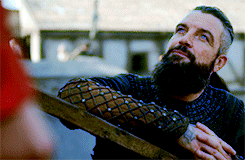

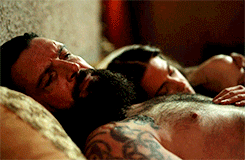
Vikings | Vikings: Valhalla Parallels Rollo & Gisla | King Canute & Queen Emma
#vikings#vikings valhalla#rolloxgisla#gislaxrollo#canutexemma#emma x canute#vikings rollo#vikings gisla#vikings canute#vikings emma#duke rollo of normandy#gisla princess of frankia and duchess of normandy#king canute of england denmark and norway#queen emma of england and duchess of normandy#perioddrama#perioddramagif#the parallels gentlemen. The PARALLELS#emma and canute are the reincarnations of gisla and rollo. it's undeniable#such beautiful power couples
331 notes
·
View notes
Text
Fine we can talk about the English
So. King Knut (Canute) was ruling in England, at least the York area. He conquered him some Denmark. He conquered him some Norway too, and drove Olaf and son Magnus to outlawry. Olaf made a bid to reclaim his kingdom, failed. Knut installed his sons as kings in England, Denmark, and Norway, and, being an old man, promptly died. (Charles take note.)
So in England, Knut's son Harald takes over, but then he dies and Knut's next son Hortha-Knut comes back from Scandinavia to rule, and he sticks around for a few years. Long enough for Magnus Olafsson to come back from Kiev and retake his country, and make a deal with Hortha-Knut that they are such good buddies that if one of them dies without a male heir, the other will inherit.
Ynglings are. Very accustomed to sharing crowns, I have discovered.
So Hortha-Knut dies. Magnus is a bit busy with this dude Svein who keeps trying to conquer Denmark on the grounds that Magnus gave it to him as jarl and who cares if Svein declares himself king and independent, it's his now, don't you know who his father is?? Anyway Edward (Eadward) takes over in England.
Magnus gets shut of Svein, finally, largely by inspiring his army with stories of how Svein's daddy might be a king but Magnus's daddy is a saint, and God is on their side, the daddy of all daddies. So once he's feeling confident in his hold over Norway and Denmark, he sends a message back to England all, "Hey, remember this deal I had with Hortha-Knut?"
And Eadward, that badass pushover, sends a message back, saying, "Look. My dad was king of England, and I was well. When he died my eldest brother Eadmund was king, and I was well. After him my stepfather Knut ruled England, and I was well. And when he died my brother Harald ruled, and I was well. And when he died my brother Hortha-Knut ruled, and I stood by, and all was well, but let me remind you that I yet of the brothers had no kingdom to govern.
"So now you want to come over here and declare yourself king? Let me just say, over my dead body.
"And I will make it easy for you. If you come, I will not raise an army, you can march right in. But you will very much have to kill me with your own hands."
Which Magnus abstains to do.
#it's a very Much Adooooo sort of a message#one woman is fair yet I am well#that she raised me I likewise give her most humble praise#but that I WILL RAISE MY BUGLE ---#Norsebinge#icy sagas#while I'm at it: my word choice in that last line is a deliberate reference to Donne's “Woman's Constancy”
2 notes
·
View notes
Text
➝ A Short History Of The US Flag 🧩

The people of the world have been herded into manageable corrals. The ancient land of Canaan was occupied by the Philistines (today’s Palestinians) before it was conquered by the Hebrews who renamed the land “Israel” and divided it into 12 tribal districts.
By 69AD, the Roman soldiers destroyed the Hebrew Temple of Solomon, burned Jerusalem to the ground, gave the land back to the Philistines and renamed Israel “Palestine”. The 12 Hebrew tribes fled and dispersed from the land.
vikings Where did the Hebrews go?
The Hebrew tribe of Dan adopted the symbols of a dragon and a snake and emblazoned them on their red and white flag together with the crest of an eagle. The carvings of snakes and dragons on their ships, the red and white stripes on their sails and archeological relics reveal that the tribe of Dan became the dreaded Vikings.
The Tribe of Dan settled in Greece along the River DANube and became a ferocious force of brutal seafaring pirates. They named themselves after their ancestral Hyksos Kings (Habirus-Hebrews) who had ruled Egypt as the 15th Dynasty.
VI Kings = 6 Kings = VIKINGS
They pirated their way along the Mediterranean and sailed up the coast of Europe marking their migration trail by naming mountains, towns and rivers after themselves. The river Danube and the Jordan River. Denmark literally means, “the mark of Dan”. Since the original Hebrew language had interchangeable vowels, the name of Dan can also be spelled Din, Den, Dun or Don. ScanDINavia, LonDON, SweDEN and DENmark are all marked by Dan.
Like rabid beasts, the Vikings plundered, robbed and slaughtered on their reign of terror throughout the British Isles accumulating massive amounts of wealth.
Cnut British Israel
By 1017 AD, the King of the Vikings, King Canute, was crowned King of England, Denmark, Norway and Sweden. King Canute was known as Knud in Denmark and Knut in Norway.
Irish annals and history describe this “Tribe of Dan” as the “Tuatha de Danaans. Ireland has a harp on its Coat of Arms associated with King David of Judah and Israel. England and Wales have a dragon on their flag.
flags The United States is symbolized by the eagle which symbolized the Hebrew Tribe of Dan. The U.S. flag imitates the 13 red and white stripes found on the sail of the Viking (Tribe of Dan) ships and also found on the British East India Company flag. The U.S. flag replaced the Union Jack (Union of Jacob) with sprinkled pentagrams.
The British Empire’s wealth was built on piracy, the black slave trade and opium (heroin) trafficking. Opium profits were sent to the Elector of Hesse via Mayer Amschel Rothschild to hire 16,800 Hessian troops to fight the American rebels.
Drug traffic and the Rothschilds played a pivotal role in American history – but these facts have been deleted from the history books.
flag The United Kingdom (of Israel)
More than a thousand years after the Romans chased the Hebrew tribes out of ‘Israel’ (Canaan), the tribes reunited in a new land under a new flag called the “Union Jack”. The Union Jack stands for the Union of Jacob (Jakhuber) who is the patriarch of the Jews.
The United Kingdom is the RE-UNITED Kingdom of the Hebrew tribes of Israel and their modern day monarch is Queen Elizabeth II. Gad (Goths), Dan (Danes), Napthali (Norwegians). Judah (Jutes) was symbolized by the lion. It is now the emblem of today’s British heraldry.
Our “Viking” Days Of The Week
The English words for four of our days of the week are named for Viking gods or royal figures. Tuesday is named for the Viking god of war and justice, Tyr or Tiw, Tuesday being literally “Tiw’s day”. Wednesday is named for Woden, the first great god-king of the Norse in ScanDINavia. Thursday is named for his son, Thor, and Friday after his wife and Queen, Frigg or Freyja.
Sunday is named after the Egyptian SUN god “RA”. Monday is named after the Egyptian MOON goddess ISIS. Saturday is named after the planet Saturn (Satan).
The word “Britain” means “land of the covenant”. The word “British” means “man of the covenant”. A covenant is a “promise”. It is described in the Bible’s Book of Genesis (Gene of ISIS). It is God’s covenant with Abraham promising the land of Isis-Ra-El (ISRAEL) to God’s chosen race of people – the Hebrews.
British National Anthem
Anyone with an ounce of knowledge about British history knows that the British Monarchs have beheaded, colonized, tortured and pillaged. They have built their wealth on drug and slave trafficking. The words “gracious” and “noble” do not apply.
God save our gracious Queen, Long live our noble Queen, Long to reign over us; God save the Queen!
The question is “What God?” and “Who’s God?”. Moloch, the god of War? Mammon, the god of Money?
Israel’s National Anthem
With eyes turned toward the East, looking toward Zion, the two-thousand-year-old hope – will not be lost: To be a free people in our (Palestinian) land The land of Zion and Jerusalem
The British royal families are descendants of Israel’s Tribe of Dan and Judah. Their ultimate goal is to reclaim the land of Israel, rebuild Solomon’s temple and erect an eternal “world throne” in Jerusalem under their chosen World King – Prince william.
Those in doubt need only verify the hymn called “Jerusalem” that was featured at the gathering of the “Hebrew” royals at Westminster Abbey for Prince William’s wedding-of-the-century. The Hymn describes the war that is being fought to reclaim and rebuild Jerusalem.
And was Jerusalem builded here Among those dark satanic mills? Bring me my bow of burning gold! Bring me my arrows of desire! Bring me my spear! O clouds, unfold! Bring me my chariot of fire! I will not cease from mental fight, Nor shall my sword sleep in my hand, Till we have built Jerusalem In England’s green and pleasant land.
1 note
·
View note
Text
Partial List of Royal Saints
Saint Abgar (died c. AD 50) - King of Edessa, first known Christian monarch
Saint Adelaide of Italy (931 - 999) - Holy Roman Empress as wife of Otto the Great
Saint Ælfgifu of Shaftesbury (died 944) - Queen of the English as wife of King Edmund I
Saint Æthelberht of Kent (c. 550 - 616) - King of Kent
Saint Æthelberht of East Anglia (died 794) - King of East Anglia
Saint Agnes of Bohemia (1211 - 1282) - Bohemian Princess, descendant of Saint Ludmila and Saint Wenceslaus, first cousin of Saint Elizabeth of Hungary
Saint Bertha of Kent (c. 565 - c. 601) - Frankish Princess and Queen of Kent as wife of Saint Æthelberht
Saint Canute (c. 1042 - 1086) - King of Denmark
Saint Canute Lavard (1096 - 1131) - Danish Prince
Saint Casimir Jagiellon (1458 - 1484) - Polish Prince
Saint Cormac (died 908) - King of Munster
Saint Clotilde (c. 474 - 545) - Queen of the Franks as wife of Clovis I
Saint Cunigunde of Luxembourg (c. 975 - 1033) - Holy Roman Empress as wife of Saint Henry II
Saint Edmund the Martyr (died 869) - King of East Anglia
Saint Edward the Confessor (c. 1003 - 1066) - King of England
Saint Edward the Martyr (c. 962 - 978) - King of the English
Saint Elesbaan (Kaleb of Axum) (6th century) - King of Axum
Saint Elizabeth of Hungary (1207 - 1231) - Princess of Hungary and Landgravine of Thuringia
Saint Elizabeth of Portugal (1271 - 1336) - Princess of Aragon and Queen Consort of Portugal
Saint Emeric (c. 1007 - 1031) - Prince of Hungary and son of Saint Stephen of Hungary
Saint Eric IX (died 1160) - King of Sweden
Saint Ferdinand (c. 1199 - 1252) - King of Castile and Toledo
Blessed Gisela of Hungary (c. 985 - 1065) - Queen Consort of Hungary as wife of Saint Stephen of Hungary
Saint Helena (c. 246 - c. 330) - Roman Empress and mother of Constantine the Great
Saint Henry II (973 - 1024) - Holy Roman Emperor
Saint Isabelle of France (1224 - 1270) - Princess of France and younger sister of Saint Louis IX
Saint Jadwiga (Hedwig) (c. 1373 - 1399) - Queen of Poland
Saint Joan of Valois (1464 - 1505) - French Princess and briefly Queen Consort as wife of Louis XII
Blessed Joanna of Portugal (1452 - 1490) - Portuguese princess who served as temporary regent for her father King Alfonso V
Blessed Karl of Austria (1887 - 1922) - Emperor of Austria, King of Hungary, King of Croatia, and King of Bohemia
Saint Kinga of Poland (1224 - 1292) - Hungarian Princess, wife of Bolesław V of Poland and niece of Saint Elizabeth of Hungary
Saint Ladislaus (c. 1040 - 1095) - King of Hungary and King of Croatia
Saint Louis IX (1214 - 1270) - King of France
Saint Ludmila (c. 860 - 921) - Czech Princess and grandmother of Saint Wenceslaus, Duke of Bohemia
Blessed Mafalda of Portugal (c. 1195 - 1256) - Portuguese Princess and Queen Consort of Castile, sister of Blessed Theresa of Portugal
Saint Margaret of Hungary (1242 - 1270) - Hungarian Princess, younger sister of Saint Kinga of Poland and niece of Saint Elizabeth of Hungary
Saint Margaret of Scotland (c. 1045 - 1093) - English Princess and Queen Consort of Scotland
Blessed Maria Cristina of Savoy (1812 - 1836) - Sardinian Princess and Queen Consort of the Two Sicilies
Saint Matilda of Ringelheim (c. 892 - 968) - Saxon noblewoman and Queen of East Francia as wife of Henry I
Saint Olaf (c. 995 - 1030) - King of Norway
Saint Olga of Kiev (c. 900 - 969) - Grand Princess of Kiev and regent for her son Sviatoslav I, grandmother of Saint Vladimir the Great
Saint Oswald (c. 604 - 642) - King of Northumbria
Saint Radegund (c. 520 - 587) - Thuringian Princess and Frankish Queen
Saint Sigismund of Burgundy (died 524) - King of the Burgundians
Saint Stephen of Hungary (c. 975 - 1038) - King of Hungary
Blessed Theresa of Portugal (1176 - 1250) - Portuguese Princess and Queen of León as wife of King Alfonso IX, sister of Blessed Mafalda
Saint Vladimir the Great (c. 958 - 1015) - Grand Prince of Kiev and grandson of Saint Olga of Kiev
34 notes
·
View notes
Note
Director's Cut Ask: So I know it's been a while since you wrote it, but I so love the Emma/Canute 1940s AU set within The Darkening Sky 'verse (Lady Emma and Admiral Svendson...dreamy sigh), and I would love to hear a bit more about how you came up with the whole idea and, if you're so inclined, what you saw as the backstory between Lady Emma and the Admiral... ;)
Okay okay okay this is GREAT. Here is an inside scoop on how I usually AU!
So, in their own story, these two characters have their own dynamics and place in the world - they're royals! they're in charge of things! But in the AU, by necessity, there have to be other royals in positions of power. (George VI, Churchill, Chamberlain, pretty critical infrastructure for World War Two.) So they can't be the king and queen, they have to be …something else. Elizabeth Bowes-Lyon is doing a great job as the Queen of England, so Emma has to be close to that, but different. A lady in waiting serving as a kind of social secretary to the Princess Elizabeth puts her in the palace, close to people in power. A widow - perhaps her significantly older husband was lost at Dunkirk. There's been some sort of drama with the matter of her estates, since she's a second wife. She loves her work. Her two boys are still in school. That's her sorted.
Sweden is neutral. Norway's royal family is forced to flee the country (which, by the way, was recently the subject of a great PBS piece, Atlantic Crossing, in which Soren Pilmark plays Haakon VII.) The Netherlands is occupied but their Navy continues to operate out of Allied countries (including a headquarters in London). Denmark is occupied in 1940; the King, Christian X, remains in the country. Citizens of all of these countries work with British Intelligence to use their knowledge of their countries to work against Nazi occupation. There's this big trend of…people in exile, so that's something to play with. Naval power is a key feature in the Viking world, and during World War Two. In addition to being a king, Canute is also in charge of ships, so…he can be an admiral, instead. Still a man of power, just in a slightly different way. (And he needs a last name, because twentieth century, so - Svendson it is.)
Which brings us to…the backstory.
Here is a man who is a guest of Windsor Palace - highly decorated, far away from home, politically very valuable. A guest at a dinner party, perhaps. And he crosses wits at dinner with one of the queen's extremely well-informed ladies. There is…the war, and the complications of her previous marriage, and his current political situation. (And maybe there's still a wife at home in Denmark?) So they are…in love, but careful about it. Both of them are high profile people and having a known relationship could be politically complicated. That doesn't mean they can't have some really nice tension, in the interim.
(As an aside, several invested parties have determined that in this universe Godwin works in military intelligence.)
5 notes
·
View notes
Text
The way Canute relaxes his hand as soon as his beloved Aemma touches him...❤❤
There won't be another perioddrama couple like them in any other series ever again. Ever Again💔.



KING CANUTE & EMMA OF NORMANDY Vikings: Valhalla 3.05
#vikings: valhalla#vikings valhalla#perioddramagif#weloveperioddrama#3x05#canute x emma#emma x canute#cnemma#king canute the great#king canute of england denmark and norway#queen emma of normandy#nobody like them. NOBODY#they became what RolloxGisla was supposed to be in the following seasons.
166 notes
·
View notes
Photo
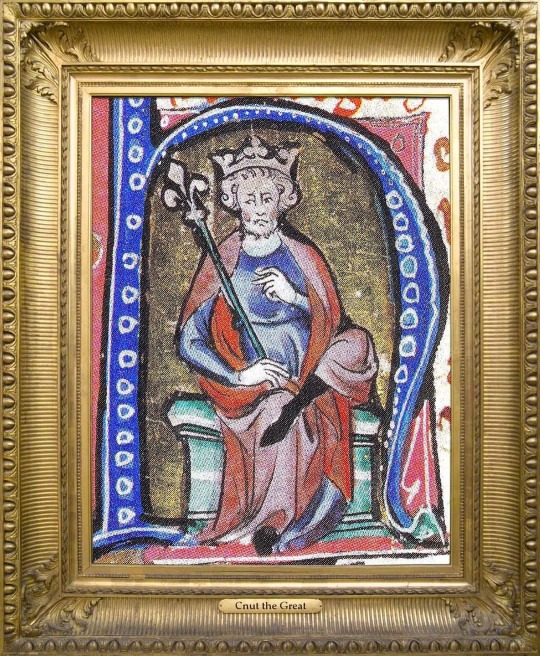
Cnut the Great . (Old English: Cnut cyning; Old Norse: Knútr inn ríki; also known as Canute. . King of Denmark: 1018–1035. King of the English: 1016–1035. King of Norway: 1028–1035. . English Coronation: 1017 in London. . Born: c. 990. . Parents: Sweyn Forkbeard & ? House of: Jelling . Married: . 1.) – Ælfgifu of Northampton. Ælfgifu (c. 990 – after 1036) was a daughter of Ælfhelm, ealdorman of southern Northumbria, & his wife Wulfrun. . Children; . Sweyn Knutsson (c. 1016–1035), king of Norway. . Harold Harefoot, King of England. . 2.) – Emma of Normandy (c. 984 – 6 March 1052), previously married to Æthelred the Unready, twice Queen of England. . Children;
Harthacnut, King of Denmark and England . Gunhilda of Denmark, (c. 1020 – 18 July 1038). She wed Henry III, Holy Roman Emperor. . Died: 12 November 1035 (aged around 45), Shaftesbury, Dorset, England. Burial: Old Minster, Winchester, England. Bones now in Winchester Cathedral, Winchester, England. . Successor: Harold Harefoot (son) . . . #kingsandqueensofgreatbritain #kingsandqueens #Monarchy #RoyalHistory #Royalty #Royals #History #Portraitpainting #historyinpictures #Britishhistory #BritishMonarchy #Art #Painting #Monarch #EnglishHistory #EnglishMonarchy #Medievalhistory #Medievaltimes #HistoryFacts #medieval #MedievalEngland #Viking #Vikings #Cnut #canute #Cnutthegreat #Danes #kingofdenmark #Kingofnorway #kingoftheEnglish (at London, United Kingdom) https://www.instagram.com/p/CRpUJ9jMtyI/?utm_medium=tumblr
#kingsandqueensofgreatbritain#kingsandqueens#monarchy#royalhistory#royalty#royals#history#portraitpainting#historyinpictures#britishhistory#britishmonarchy#art#painting#monarch#englishhistory#englishmonarchy#medievalhistory#medievaltimes#historyfacts#medieval#medievalengland#viking#vikings#cnut#canute#cnutthegreat#danes#kingofdenmark#kingofnorway#kingoftheenglish
3 notes
·
View notes
Link
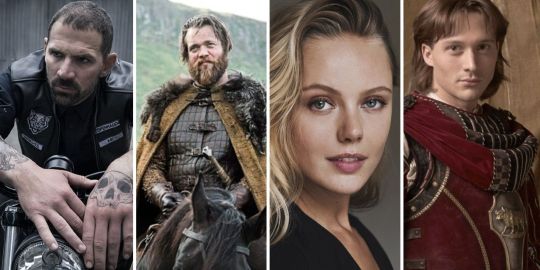
Netflix's Vikings: Valhalla cast includes actors and actresses who should be familiar to many TV viewers. The historical drama series takes place 100 years after the events of the popular History Channel show Vikings and chronicles the lives of several real-life Scandinavian warriors. Vikings: Valhalla doesn't have an official release date but will premiere sometime in 2021.
Vikings: Valhalla focuses on the end of the Viking era as Christianity takes over Scandinavia. When a religious Viking named Torsen survives a massacre led by King Æthelred the Unready, he forms a romance with a deeply anti-Christian woman named Freydís Eiríksdóttir. Vikings: Valhalla sets up a war between religious progressives and Scandinavians who cling to the past.
Related: Every New Show Releasing On Netflix In 2021
The Vikings: Valhalla main cast includes an ensemble lineup. Some performers already have loyal followings due to prominent roles in mainstream television, while others are mostly known for work in their native homelands. Just as Vikings helped launch the careers of so many actors and actresses, the Netflix follow-up will similarly do the same.
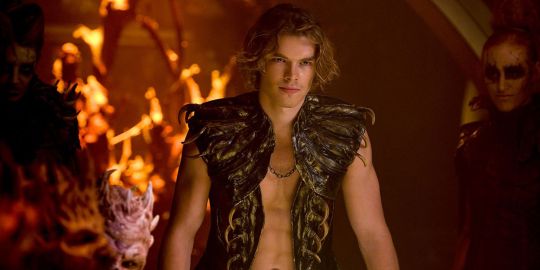
Sam Corlett stars as Leif Eriksson, a famous Icelander who arrived in North America several hundred years before Christopher Columbus. In Vikings: Valhalla, he's framed as an outsider character who values family and old pagan beliefs. Netflix has teased that Leif will introduce audiences to a Viking world "in the throes of violent change." Corlett portrays Caliban in Chilling Adventures of Sabrina. He also appeared as Young Luke in the 2020 film The Dry.

Frida Gustavsson co-headlines as Freydis Eriksdotter, Leif's pagan sister who values the ways of the Old Gods. After experiencing various tragedies, Frida forms a romance with a religious man and leads an uprising against Christians. Actress Katia Winter portrayed Freydis Eriksdotter in DC's Legends of Tomorrow. Gustavsson also starred as Vuxna Thea in the TV series Dröm and may be familiar to Netflix viewers as Ma from The Witcher season 1. She recently appeared as Clara in the 2020 series Partisan.

Leo Suter appears as Harald Sigurdsson, a nobleman who is one of the last Viking berserkers. Due to his charming ways, he's able to bridge the gap between Vikings and Christians, or at least that's his intent. Suter portrayed Young Stringer in Sanditon and Captain Bill Lauder in The Liberator. He also appeared as Drummond in Victoria and Daniel Beecham in Beecham House.
Related: Vikings Season 6 Ending Explained: Ragnar's Sons & Kattegat's New Ruler

Bradley Freegard co-stars as King Canute, the King of Denmark. He's a legendary Viking leader who was crowned in 1017. Freegard appeared as Mei Huws in the series Gwaith/Cartref and starred as Evan Howells in Keeping Faith.

Jóhannes Jóhannesson portrays Olaf Haroldson, Harald’s half-brother. He's a Christian who believes in the Old Testament and is quite large in stature. In real life, Olaf became the King of Norway. Jóhannesson is best known for portraying Lem Lemoncloak in Game of Thrones and Cumber the Ice King in Cursed. He also appeared as Bors in The Letter for the King.

Laura Berlin co-stars as Emma Of Normandy, an ambitious woman from the Norman court with Viking heritage. She's a savvy businesswoman with interest in politics, and also one of the wealthiest females in Europe. Berlin portrayed Julia Weigert in Einstein and Charlotte Lindemann in Breaking Even. She also appeared as Charlotte Montrose in the movies Ruby Red and Sapphire Blue.
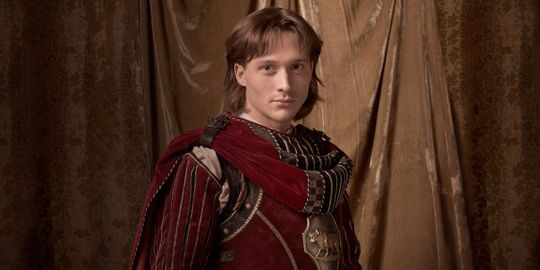
David Oakes appears as Earl Godwin, the chief counsellor to the King of England. Based on the man's real life story, he seems to be the Littlefinger of Vikings: Valhalla. Oakes portrayed Juan Borgia in The Borgias and Prince Ernest in Victoria. He's also known for his role as George Duke of Clarence in The White Queen.
Related: Vikings: What The Names of the Main Characters Really Mean

Caroline Henderson portrays Jarl Haakon, a warrior leader who rules Kattegat. The Pagan woman mentors Freydis and keeps an open mind when discussing religion. Henderson appeared as Snow White in the 2006 film Skymaster and Gloria Cole in the 2007 feature Always Yours.

Pollyanna McIntosh as Queen Ælfgifu: The Queen of Denmark who forms a relationship with Canute and hopes to affect the power dynamics across Northern Europe. Pollyana McIntosh portrayed Vera Chase in The Last Tycoon and Jadis in The Walking Dead.
Asbjørn Krogh Nissen as Jarl Kåre: A man who feels threatened by the old pagan ways. Asbjørn Krogh Nissen portrayed Ivan in Copenhagen and Odin in Valhalla - The Legend of Thor.
Julian Seager as Jarl Gorm: Julian Seager portrayed Florentin the Miller in Cursed.
Pääru Oja as Arne Gormsson: Pääru Oja portrayed Rupi in The Last Ones and Peeter Parik in O2.
James Ballanger as Hallbjorn: James Ballanger portrayed Guard Denny in the 2019 series The Capture.
Joakim Nätterqvist as Birkir: Joakim Nätterqvist starred as Arn Magnusson in Arn: The Knight Templar and appeared as Petter Torwalds in Maria Wern.
Related: Vikings: How Every Main Character's Death Compares To Real Life
Bosco Hogan as Aethelred the Unready: Bosco Hogan portrayed Bishop Fisher in The Tudors and Cardinal Piccolomini in The Borgias.
Jaakko Ohtonen as Johan: Jaakko Ohtonen appeared as Aaro Leppihalme in All the Sins and MakeX in HasBeen.
Mark Huberman as Earl of Sussex: Mark Huberman portrayed Lester Hashey in Band of Brothers and Greg in Finding Joy.
Gavin O'Connor as Earl of East Anglia: Gavin O'Connor played Macken in Taken Down and Murphy in The Alienist: Angel of Darkness.
Gavin Drea as Eadric Streona: Gavin Drea portrayed Sergeant Cooper in Valerian and the City of a Thousand Planets and Michael Collins in Resistance.
Gavan O'Connor-Duffy as Niall: Gavan O'Connor-Duffy portrayed King Frodo in Vikings and Saka in The Legion.
Yvonne Mai as Merin: Yvonne Mai appeared as Tara in Reflections and Megan in House of Shadows.
Bill Murphy as Ogda: Bill Murphy portrayed Ford in Jack Taylor and Bremner in Titanic: Blood and Steel.
Brian Robinson as YNGVI: Brian Robinson appeared as Irish in 2 Broke Girls and Pavle in Hit the Floor.
Next: All 27 2021 Netflix Movies Explained
Vikings Valhalla Cast Guide: Where You Know The Actors From from https://ift.tt/36lg74h
1 note
·
View note
Photo
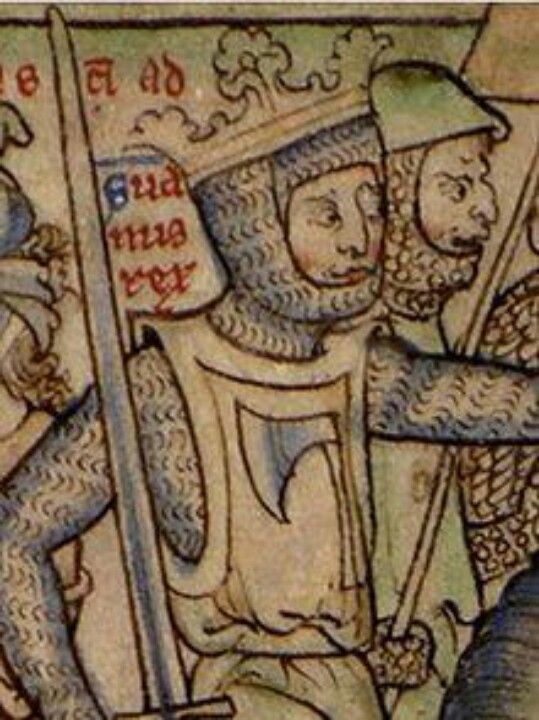

NOV. 12, 1035. DEATH OF CANUTE REX, KING OF ENGLAND, NORWAY AND DENMARK. CREATOR OF 'EMPIRE OF THE SEAS'.
"On 12th November 1035 Cnut the Great, King of England and Emperor of the North, died at Shaftesbury and was buried at Winchester Old Minster. He was succeeded in England by his son Harald, while his other son, Harðacnut, took and fought to hold the throne of Denmark.
According to the Knytlinga Saga:
“Knut was exceptionally tall and strong, and the handsomest of men, all except for his nose, that was thin, high-set, and rather hooked. He had a fair complexion none-the-less, and a fine, thick head of hair. His eyes were better than those of other men, both the handsomer and the keener of their sight.”
Cnut was the son of Sweyn Forkbeard, the Dane who was briefly King of England (by right of conquest), having finally driven out Æþelred Unrede in 1013 after extorting tribute from him for a number of years. However, Sweyn did not live long to enjoy the fruits of his victory and died in February 1014.
On Sweyn’s death the Danelaw came out in support of Cnut but the other English nobles recalled Æþelred from Normandy where he was in exile. Æþelred returned to England, and, in a pre-cursor to the events of Runnymede in 1215 when John agreed the Magna Carta, Æþelred swore to be a better king and rule more justly.
Cnut at this time was a young warrior, relatively untried as a leader of men, and despite his support in parts of the country he was driven out by the English until he returned in full force in 1015. He was much more effective in this later campaign and took most of the country, with the only meaningful resistance being brought by Edmund Ironside, son of Æþelred.
After Æþelred’s death in 1016 Edmund fought back even more vigorously against Cnut so that by November the two were brought to an agreement at Deerhurst to split the country between them. However, Edmund died soon after and Cnut became sole ruler of England with his coronation taking place on Christmas Day.
Things moved on smartly in 1017, as the Anglo-Saxon Chronicle tells us:
“AD 1017. In this year king Cnut obtained the whole realm of the English race, and divided it into four parts: Wessex to himself, and East Anglia to Thurkyll, and Mercia to Eadric, and Northumbria to Irke. And in this year was Eadric the ealdorman slain in London, very justly, and Northman, son of Leofwine the ealdorman, and Aethelweard, son of Aethelmaer the great, and Brihtric, son of Aelfeh, in Devonshire. And king Cnut banished Eadwigthe etheling, and afterwards commanded him to be slain, and Eadwi, king of the churls. And then, before the kalends of August, the king commanded the relict of king Aethelred, Richard's daughter, to be fetched for his wife, 'that was Elfgive in English, Ymma in French.” You read that right – he married Æþelred’s widow, Emma of Normandy, daughter of Richard of Normandy and mother of Edward and Alfred. The couple had two children, Gunnhilda and Harðacnut, while Cnut also had a “Danish” wife Ælfgifu of Northampton, with whom he had a son Harald (Harefoot).
Cnut ruled from 1016-1035. He established the earldoms of England and although he initially controlled Wessex directly he eventually created the Earldom of Wessex which was given to Godwin, cementing that family’s rise to power.
Cnut’s brother Harald died in 1018 and Cnut then took the throne of Denmark as well as England. In Norway, Olaf had replaced Sweyn Forkbeard as king but in 1029 his nobles supported the invasion of Cnut and so Cnut became King of Norway as well.
England took up Cnut’s main attention and he placed Ælfgifu and Harald as regents in Norway with disastrous consequences. Their rule was so unpopular that they were driven out by Magnus, the son of Olaf, in 1035, when as an eleven year old boy he was proclaimed king by the Norwegian nobles. Olaf’s brother Harald was to return later and to have a significant effect on English history, for he became better known as Harald Hardrada.
Cnut worked with the church, particularly Bishop Wulfstan, to rule England according to English laws and customs from the time of King Edgar. He promoted men he trusted from the English ranks as well as Danish. In 1027 he was able to leave the kingdom securely while he travelled to Rome to witness the coronation of Conrad, the Holy Roman Emperor.
While in Rome he negotiated fiercely for better terms for English merchants, pilgrims and churchmen. He wrote in a letter to his nobles:
“I spoke with the Emperor himself and the Lord Pope and the princes there about the needs of all people of my entire realm, both English and Danes, that a juster law and securer peace might be granted to them on the road to Rome and that they should not be straitened by so many barriers along the road, and harassed by unjust tolls; and the Emperor agreed and likewise King Robert who governs most of these same toll gates. And all the magnates confirmed by edict that my people, both merchants, and the others who travel to make their devotions, might go to Rome and return without being afflicted by barriers and toll collectors, in firm peace and secure in a just law.”
Henry of Huntingdon, writing in the 12th century, records a summary of his reign including the curious story of the King Cnut and the Tide:
“A few words must be devoted to the power of this king. Before him there had never been in England a king of such great authority, He was lord of all Denmark, of all England, of all Norway, and also of Scotland. In addition to the many wars in which he was most particularly illustrious, he performed three fine and magnificent deeds. The first is that he gave his daughter in marriage to the Roman emperor, with indescribably riches. The second, that on his journey to Rome, he had the evil taxes that were levied on the road that goes through France, called tolls or passage tax, reduced by half at his own expense. The third, that when he was at the height of his ascendancy, he ordered his chair to be placed on the sea-shore as the tide was coming iin. The he said to the rising tide, “You are subject to me, as the land on which I am sitting is mine, and no one has resisted my overlordship with impunity. I command you, therefore, not to rise onto my land, nor to presume to wet the clothing or limbs of your master.” But the sea came up as usual, and disrespectfully drenched the king’s feet and shins. So jumping back, the king cried, “Let all the world know that the power of kings is empty and worthless, and there is no king worthy of the name save Him by whose will heaven, earth and sea obey eternal laws.” Thereafter King Cnut never wore the golden crown, but placed it on the image of the crucified Lord, in eternal praise of God the great king. By whose mercy may the soul of King Cnut enjoy rest.”
Cnut was buried at the Old Minster in Winchester, which he and Queen Emma had richly endowed, and his bone translated to a mortuary chest when the cathedral was rebuilt. In the English Civil War (17th century) his bones were scattered and trampled with others by soldiers, and only later collected and placed back in the mortuary chests, although in a muddled fashion with the other victims of the desecration.
Coincidentally on 12th November 1041 Cnut’s son, Harthacnut, laid waste to Worcester after the murder of his tax collectors on 4th May – (...)."
Credits to facebook page "Anglo-Saxon History in Yorkshire."
#Cnut the Great#King Cnut#on this day in history#Queen Emma#Reine Ymma#Aelfgifu Regina#Canute Rex#King Canute#King Knud#Denmark#medieval#Danish rule#monarchy#history#middle ages#empire of the sea
13 notes
·
View notes
Text
The island of the beheaded

Although the islet of Munkholmen owes its name to a monastery that was established there (meaning Monks’ Islet in Norwegian), it was formerly used as a place for executions and where a number of severed heads from the bodies of their owners greeted sailors entering the Trondheim Fjord.
In the time of King Olav Tryggvason, towards the end of the 10th century, it was already known for the executions carried out there by the jarls (which in Scandinavian-occupied England would eventually give rise to the common title of earl, equivalent to lord) of Lade.
Later, the local rulers decided to change the location of the decapitated heads to Trondheim, so that citizens would think twice before engaging in crime. In a society where the Viking custom of plundering distant lands was so ingrained, the drastic way of protecting their homeland is quite a contrast.
By the 12th century Benedictine monks were living in an abbey called Nidarholm. Its foundation is attributed to Canute the Great, king of England, Denmark and Norway in the early 11th century, but it is also dated to around 1100 under the patronage of St Benedict and St Laurence.
During the Middle Ages, the monastery burned three times, and by the time of the advent of the Lutheran Reformation in Scandinavia it was in ruins, until its physical disappearance in the 17th century, when the islet was fortified.
The fortification eventually turned Munkholmen into a Danish prison, as Norway and Denmark were united under the same crown. Its usefulness ended in the late 19th century, but during World War II, the German occupiers revived its military use by installing anti-aircraft batteries to protect the U-boat base they established there.
1 note
·
View note
Text
The History of Norsemen, or Vikings
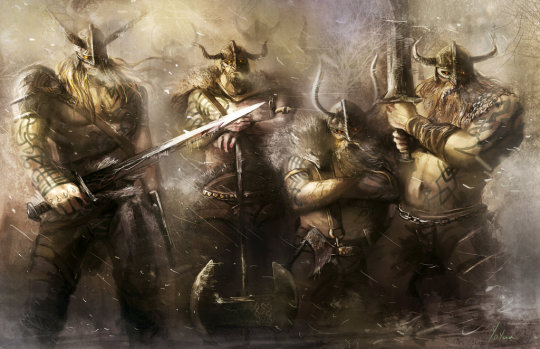
During the tenth century Charlemagne’s empire and Anglo-Saxon England were attacked by a new group of invaders known as Norsemen, or Vikings. They came from the far northern part of Europe now called Scandinavia. The tall, fair-skinned Vikings became known as brutal fighters and robbers. They spread fear and destruction throughout western Europe for several hundred years. At the same time, however, they opened up new trade routes and brought shipping skills to other Europeans.
The Vikings captured parts of Britain and France. They ruled cities in Russia and set up colonies on islands in the North Atlantic. They even paid a brief visit to North America. Those who went abroad married the people they conquered. They also accepted a new religion and customs. Others stayed in Scandinavia and set up the kingdoms of Norway, Sweden, and Denmark.
THE LAND
The Viking homeland of Scandinavia was an area mostly of forests and long, rugged coastlines. The southern part, known as Jutland, 0r Denmark, had many natural harbors. It also had large plains where the Vikings grew oats, barley, rye, and wheat and pastured their cattle, sheep, and pigs.
The rest of Scandinavia was not as well suited to farming. Winters were long and cold, summers short and mild, and the soil rocky. The coastline, however, had many fjords, or bays. So the people turned to the sea to making a living.
SHIPS AND TRADE
The Vikings built ships with timber from the dense forests and sailed out of the fjords onto the sea to make a living. The ships were large and well suited for long voyages. The bodies were long and narrow. The sides, where a single row of 16 oars was placed, were usually decorated with black or yellow painted shields. The tall bows were carved in the shape of a dragon’s head. This was supposed to frighten both enemies and the evil spirits of the ocean. The strongly sewn sails were square and often striped red and yellow. The ships bore names like “Snake of the Sea,” “Raven of the Wind,” and “Lion of the Waves.”
An awning in the forepart of the ship protected the sailors from bad weather. They slept in leather sleeping bags and carried bronze pots in which to cook their meals. Whenever possible, they cooked their meals ashore to avoid the danger of a fire on board ship.
The Vikings plotted their courses by the positions of the sun and stars. They sailed far out into the North Sea and the Atlantic Ocean in search of good fishing areas and trade. They did most of their traveling and trading in the spring after their fields were sown, or in the fall after their crops were harvested. They spent the long winters in their villages repairing their boats and weapons.
The Vikings were as successful in trade as the Phoenicians. Viking traders carried furs, hides, fish, and slaves to western Europe and the Mediterranean. They returned from these areas with silk, wine, wheat, and silver.
TOWNS, VlLLAGES, AND JARLS
Trade led to the growth of market towns in Scandinavia. These towns usually had two main streets that ran along the water’s edge. Buyers and sellers set up booths and displayed their wares along the streets. The towns were protected on their land side by mounds of earth surrounded by wooden walls with towers.
Most Vikings lived in villages scattered throughout the country. Their houses were made of logs or boards. The roots, which were made of sod-covered wood, slanted steeply to shed the heavy winter snows. Carvings of dragons decorated gables at either end. In front of each house was a small porch supported by carved pillars.
Distance and the cold winters isolated the people of one village from those of another. As a result, there was no central government. The people were divided into groups ruled by military Chieftains calIed jarls. Jarls either inherited their position or were elected to it. They saw to it that their group’s laws were obeyed. Sometimes a jarl became strong enough to take over and unite neighboring territories. When a jarl had enough territory under his rule, he was recognized as a king.
Most Viking adventurers, however, went to western and southern Europe in search of food and valuables. They disguised their ships to look like wooded islands by covering them with tree branches. Then they traveled far up the rivers to make surprise attacks. They stole goods, destroyed homes, burned churches, and killed or sold as slaves any people they captured. All Europe feared the Vikings. In their churches the people prayed, “From the fury of the Norsemen, Good Lord, deliver us!”
THE DANES
Some of the Danish Vikings Settled in the areas they raided. One group of Danes invaded England and set up settlements there. In 954 an heir of Alfred the Great forced them to leave the Danelaw. In 978 Ethelred, nicknamed the Unready, became king of England. The Danes saw their chance and began raiding England again. At first Ethelred was able to buy them off with silver. But in 1017 a Danish king called Knut, or Canute, took over the country and made it part of his North Sea Empire. Canute was a powerful but just ruler. He converted to Christianity and brought peace and prosperity to England. Soon after his death in 1035, however, Danish control of England came to an end. Some Danes left England. Those who remained became a part of the English people and culture.
DAILY LIFE
Family life was important to the Vikings. Most households contained 20 to 30 members including parents, grandparents, married children, and grandchildren. Families often fought bloody feuds to maintain their honor. The payment of fines later put an end to such feuds.
THE PEOPLE
Viking men were warriors called berserkers. They believed in a life of action and valued deeds that called for strength and courage. They fought to gain wealth, honor, and fame. They believed that a liking for war brought special honors from the gods.
To call their warriors to battle, the Vikings lit bonfires on the tops of mountains. Those who saw a fire would light a new one to spread the message. The warriors fought with battle axes, swords, and spears. Metal helmets decorated with animal figures protected their heads. Shirts made of iron rings and covered by a large cloth protected their bodies. The warriors preferred to die by their own hand rather than give their enemies the satisfaction of capturing or killing them.
A Viking groom bought his wife from her family on their wedding day. If he was not pleased with her, he could sell her. Yet the position of Viking women was quite high. They took complete charge of the home. They could attend public meetings and talk with men other than their husbands. They could own property and get a divorce. Many Viking women grew herbs which were used as medicine. All the women encouraged their men to fight.
Both men and women liked fine clothes. The men usually dressed in trousers and woolen shirts covered by knee-length tunics. Broad leather belts held the clothing in place. Sheepskin hoods and caps kept heads warm. For special events the men wore red cloaks with brooches and carried decorated swords and daggers. The women also wore tunics held in place by a belt. They covered their heads with woolen or linen caps, and wore large brooches, pins, and bracelets. Both men and women wore their hair long, and the men took great pride in their mustaches and beards. Calling a Viking man “beardless” was an insult that could be wiped out only by death.
The Vikings had no schools. Parents taught daughters such household skills as spinning, weaving, and sewing. They taught sons to use the bow and arrow and to be good fighters. The boys also memorized tales of heroic warriors and gods, and competed in games that tested their strength and endurance.
RELIGION
The Vikings worshipped many gods which at first were closely ”related to Germanic gods. In time they changed the names and activities of their gods to suit the harsh life 0f Scandinavia. The Vikings believed that the gods were responsible for the weather and for the growth of crops . Since the gods liked to hunt, fish, and play tricks on one another, the Vikings viewed them as extra powerful human beings.
The Vikings bargained with their gods to get what they wanted. Priests offered sacrifices of crops and animals on behalf of the whole community. Most Vikings also had small shrines in their homes where they could pray or offer sacrifices.
The Vikings were proud of their gods and told stories of their great deeds. These stories later became written poems called eddas. The Vikings also composed sagas, or epic stories. At first skilled storytellers used to recite sagas at special banquets. One such saga took 12 days to recite. After 1100 the Vikings wrote down their sagas. With the coming of Christianity, the people lost interest in these tales. Many were forgotten or were forbidden by the Church. Only the people of Iceland passed on the old tales.
At first the Vikings spoke a language similar to that of the Germans. In time the one language developed into four Danish, Norwegian, Swedish, and Icelandic. They were written with letters called runes, which few people except the priests could understand or use. The Vikings used the runes as magic charms. They wrote the runes in metal and carved them in bone in the hope that they would bring good luck. When the Vikings accepted Christianity, they began to write their language with Roman letters.
RAIDS AND ADVENTURERS
Scandinavia’s population kept increasing. By the end of the ninth century many Viking villages were overcrowded, and there was not enough food for everyone. Since there was no central government, the kings constantly fought one another and made life difficult for their enemies. Before long many Viking warriors began to seek their fortunes elsewhere.
Groups of warriors attacked merchant ships on the open seas. Danish Vikings began raiding the coasts of France, England, and Spain. Swedish Vikings crossed the Baltic Sea and traveled down the rivers toward Russia. They founded settlements and began to trade. They established a water route from the Baltic to the Black Sea and on to the wealthy city of Byzantium. This water route came to be known as the Varangian Route. In 862 a Swedish Chieftain named Rurik founded a Viking state that became the basis of the Russian monarchy. Norwegian Vikings established trading towns in Ireland, explored the North Atlantic, and founded a colony on the island of Iceland.
Led by an adventurer named Eric the Red, the Norwegian Vikings began to move even further west. In 986 they founded a colony on the island of Greenland. Then Eric’s son, Leif Ericson, sailed across the Atlantic Ocean and landed on the northeast coast of North America. He and his followers named the spot where they landed Vinland because of the wild grapes they found growing there. Today the area is called Newfoundland. The Vikings did not set up a permanent colony in Vinland because it was so far away from home and the winters were so cold.
SUMMARY
The Vikings lived in northern Europe in an area which is today known as Scandinavia.
The Vikings were excellent warriors, sailors. and navigators who earned their living mainly by fishing and by trading with other European regions.
The Vikings lived in villages that were basically isolated from one another. The Vikings worshipped many gods and often told stories about their great deeds.
At first the Vikings spoke one language, but over time it developed into four separate languages.
When the Vikings accepted Christianity, they stopped writing their languages in runes and began to write with Roman letters.
By the ninth century Scandinavia was overpopulated, so many Viking warriors began to seek their fortunes in other places.
In 862 a Swedish Viking named Rurik established a settlement, and that settlement later developed into the Russian nation.
In 986 Norwegian Vikings founded a colony on Greenland, and several years later sailed as far west as the northeast coast of North America.
In 1017 a Danish king named Canute conquered England, but after his death Danish control of England came to an end.
Other Danish Vikings, after besieging Paris, settled along the French coast in an area known as Normandy.
9 notes
·
View notes
Text
Vocabulary (pt.mlxxxi)
Words taken from On Writing Well by William Zinsser:
misalliance (n.) an unsuitable alliance, especially an unsuitable marriage.
mockingbird (n.) a bird, especially the American songbird Mimus polyglottos, that mimics the notes of other birds.
motherlode (n.) mining. the main vein of a system.
parody (n.) a humorous exaggerated imitation of an author, literary work, style, etc., especially for purposes of ridicule.
portsider (n.) sports. a left-handed pitcher, boxer, hockey player, etc.; a southpaw. [x]
Petri (petri) dish (n.) a shallow covered dish used for the culture of bacteria etc.
Canute (d. 1035) Danish king of England 1016–1035, Denmark 1018–1035, and Norway 1028–1035. His reign ended a prolonged struggle for power and was a period of relative peace; it is recounted that he proved to his fawning courtiers that he was not all-powerful by showing that he could not stop the rising tide.
backslide (v.) relapse into bad ways or error, especially in ideology.
tessitura (n.) music. the range within which most tones of a voice part fall.
trifler (n.) a person who lacks experience and competence in an art or science. [x]
0 notes